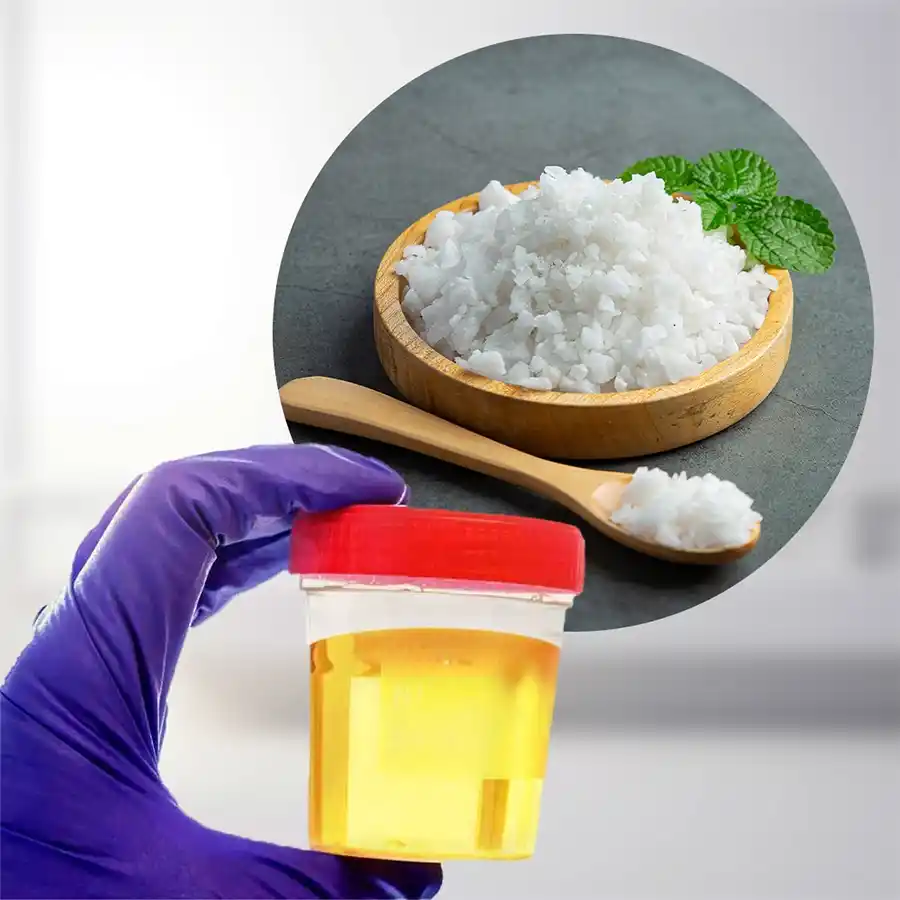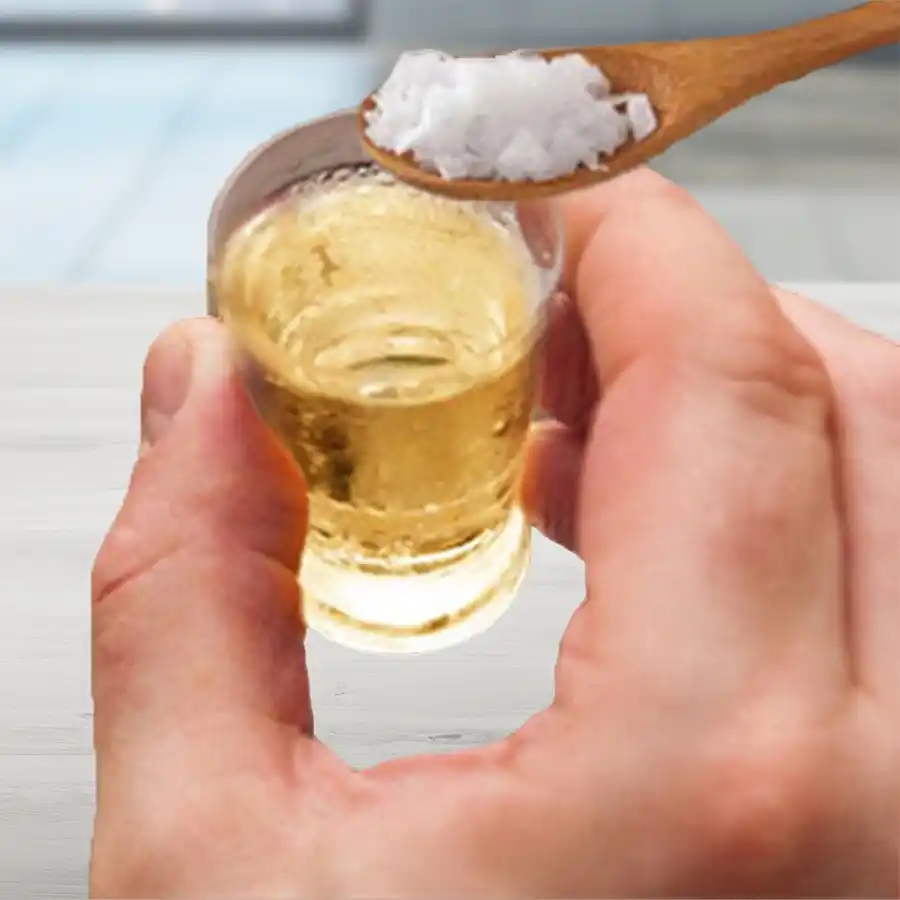Pregnancy Test With Salt: One Of 6 Traditional Pregnancy Testing Methods
Women who suspect they are pregnant can consider home pregnancy testing methods, including using a pregnancy test kit, blood tests, urine tests, and traditional methods such as using salt.
The simplest and most accurate way to determine if you are pregnant is by checking the hCG levels in your blood or using a pregnancy test kit.
However, not everyone has access to these tools or can visit a hospital for immediate testing. If you are too excited to wait to buy a pregnancy test kit or cannot go due to personal reasons, then testing for pregnancy with salt is the quickest alternative at this moment.

Many women use the salt test method, although this method has not been scientifically proven effective. So how do you test for pregnancy with salt? Is it accurate? Let’s explore this traditional pregnancy testing method at home with Wilimedia!
What is the salt pregnancy test method?
The salt test is a traditional method used for generations and believed to provide accurate results. However, this testing method is very popular in India and the Philippines.
This folk test method involves checking the hCG levels in urine. The fetus produces this hormone, and it increases throughout pregnancy. Today, blood tests are typically conducted to measure this hormone in the body and determine pregnancy based on the results.
The salt test method has been passed down for generations, but no scientific research has confirmed its effectiveness or proved it can replace modern pregnancy test tools. Therefore, the results of this traditional test should only be considered as a reference. For 100% accurate results, women should use a pregnancy test kit or undergo blood or urine tests.

The right time to use the salt pregnancy test method
Choosing the right time to test for pregnancy is necessary for the best results. The salt test is commonly used on the fifth day after ovulation. So, if you plan to use this method, track your ovulation days to ensure the best possible results. Don’t worry if you don’t know when you’ll ovulate. You can test for pregnancy at home by following the instructions below.
Preparation: A glass cup and white salt.
How to do it: Immediately after waking up in the morning, add some salt to the glass cup, then add urine to the cup, ensuring the salt is submerged in the urine.
Wait for 3 to 5 minutes and observe. If foam forms around the glass cup and the urine solution darkens compared to the initial urine, it indicates pregnancy. If the glass cup remains unchanged, you are not pregnant.
For more accurate results, you can repeat the test several times over a few days.
What other traditional pregnancy testing methods exist besides the salt pregnancy test?

Besides the salt test, this is also a very popular method. First, place a spoonful of sugar in a bowl. Then, wait for about five minutes and add urine. If the sugar does not dissolve, it may indicate pregnancy. However, if the sugar dissolves, you are not pregnant.
Add two tablespoons of toothpaste to a cup of your morning urine. Wait for a few minutes. If the solution turns blue and foamy, it’s time to prepare for your first prenatal visit. Conversely, if no changes occur, you are not pregnant.
- Testing with baking Soda:
This method is similar to the salt test. Add baking soda to a cup of urine. If the solution foams up like a fizzy drink, you might be pregnant. If this does not happen and the baking soda settles at the bottom of the cup, you are not pregnant.
For about five days, a woman’s urine sample is injected into a test rabbit or laboratory mouse. On the morning of the fifth day, the doctor checks their ovaries. If the ovaries are developing, it indicates that the woman is pregnant. This needle test method is not common due to its complexity.
The soap test is an interesting chemical concept similar to the salt test that you can perform at home. Place a piece of soap in water, stir it to make foam, and then mix it with morning urine in a ratio of 1:3. Wait for 5 to 10 minutes to see the result. If the solution turns green and bubbles appear, you are pregnant. If the solution does not change, you are not pregnant.
People often say they can test for pregnancy with many other things besides salt, such as detergent, sugar, and toothpaste. However, advice on pregnancy testing methods without scientific evidence should not be completely trusted. Therefore, use these methods as a reference only and not as a definitive answer.
Modern, convenient, and accurate pregnancy testing methods
With more convenient and accurate methods available, women need not worry about the accuracy of the salt test. Some common methods to determine pregnancy include:

- Using a pregnancy test stick or kit:
This method has an accuracy rate of 97–99%. Using a pregnancy test stick provides higher accuracy in this case.
You can buy a pregnancy test kit or stick at a pharmacy. This method tests the hCG levels in a woman’s body, which increase during pregnancy. The pregnancy test stick is considered more convenient as you can hold the stick and let the other end come into contact with urine. The stick will display the result within 1 to 2 minutes.
When using a pregnancy test kit, you need to collect urine in a small plastic cup, then place the test stick in the cup and wait for the result.
You can visit a hospital to perform tests to determine pregnancy. These tests provide accurate and quick results within two weeks from the time of conception.
Ultrasound not only confirms pregnancy but also determines the fetus's age, size, and whether the fetus has implanted in the uterus.
Transvaginal ultrasound is an important method to confirm pregnancy in the early stages. It also helps diagnose vaginal inflammation, uterine abnormalities, and other gynecological conditions.
Conclusion
You can try some of the following simple pregnancy test methods if you do not have specialized pregnancy test tools. However, remember that the results from the salt pregnancy test or other traditional methods are only for reference. For accurate and quick results, visit a hospital for proper testing.